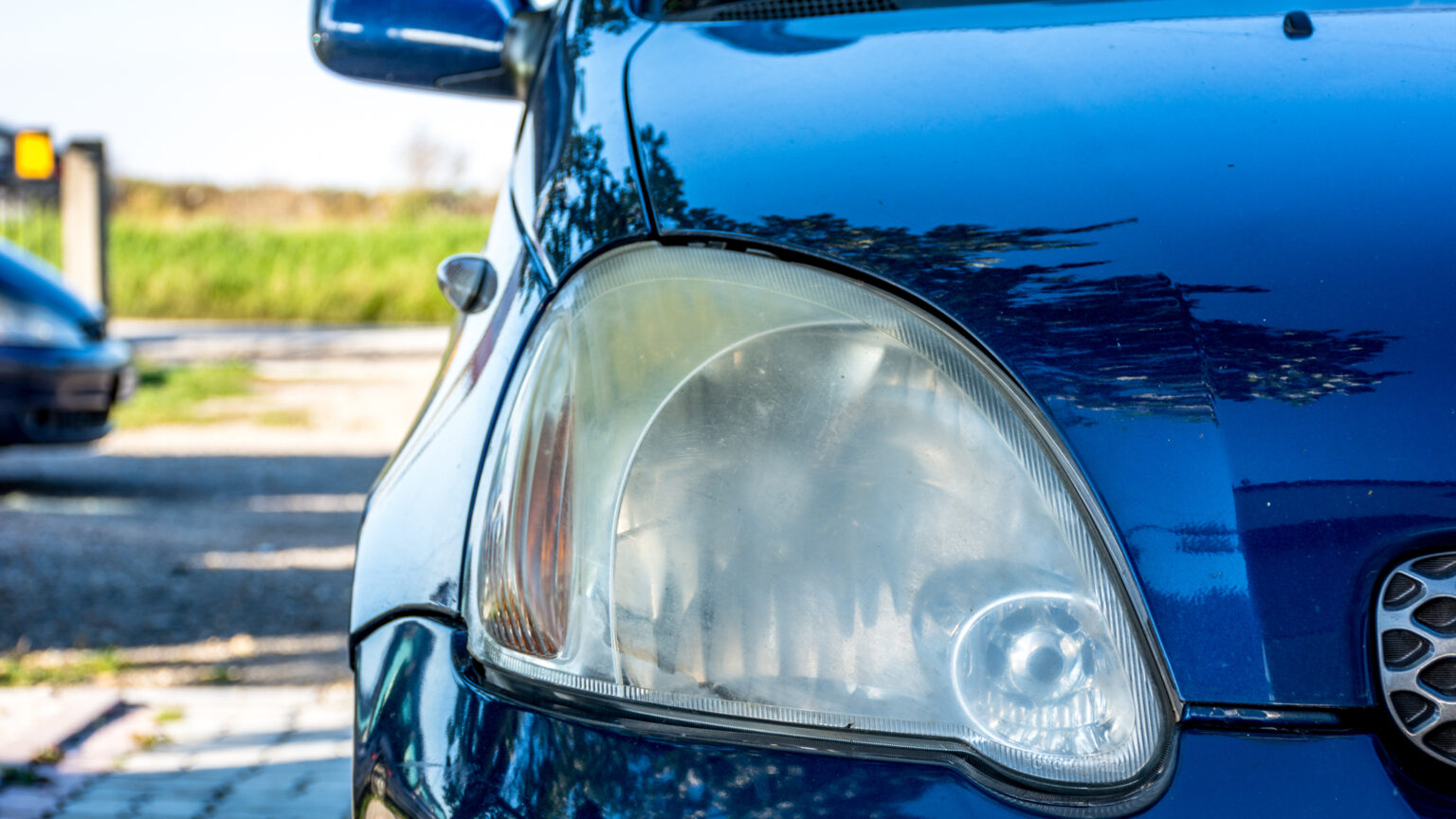Sealed beam headlamps started to give way to composite halogen lamps around 1987. Composites allowed for much brighter, replaceable bulbs in a large plastic housing, rather than all cars relying on two shapes of light bulb – square or round. The biggest problem with composite headlamps is that after years of UV exposure, the lenses become foggy to the point that the light barely shines through anymore. Replacement can be insanely expensive but fear not. There are ways to clean foggy headlights so that the light shines crystal clear again.
Will Bug Spray Clean Foggy Headlights?
The short answer is “no.” Not for long, anyway. Sure, you can smear just about any greasy substance on the lenses (we’ve heard WD-40, suntan lotion, and bug spray as potential contenders), but the first time it rains, that goopy stuff is going to wash off, and you’re going to be right back to square one.

You’re much better off taking an afternoon and doing it the right way.
How to Polish Your Headlamps
Polishing composite headlamps is basically wet sanding imperfections from a painted surface. You’ll start with a fairly aggressive sandpaper and work your way up to higher and higher grades until you’re ready to polish the lenses with some kind of abrasive polishing compound.
If you’re the kind of person who has a lot of use for sandpaper, you can buy individual packages of paper, but companies like 3M have made headlamp polishing easy with kits that contain all of the materials you’ll need for cleaning them.
The 3M Headlight Lens Restoration System is available at any auto parts store and contains:
- A sanding disc pad
- 6 3M Gold 500 Grit Sanding Discs
- 4 3M White 800 Grit Sanding Discs
- 1 3M Trizact Refining Disc
- 3M Rubbing Compound
Other Supplies
If your kit doesn’t contain masking tape, you’ll also want to pick up a roll of 3M Green masking tape.
You’ll be wet sanding, which you can accomplish with a bucket of water and a little dish soap in it, but we also like a detailing spray like Meguiar’s Quik Detailer.
Finally, have a selection of towels around. We like microfiber towels, but anything will do.

Step 1
Mask off the painted surfaces around the headlamps. You don’t have to go wild, but you want to be able to sand the entire headlamp right up to the painted surfaces.
Step 2
Attach the sanding 500 grit sanding disc to the disc pad, and wet the paper and the headlamp, either using water from the bucket or your Quik Detailer spray.
Step 3
Begin sanding the headlamp. Don’t panic. At 500 grit, the lens is going to sand almost white, and you’re going to think you’re ruining the surface. You’re not. You’ll improve the clarity with every step. You don’t have to sand in a circular motion. Just go back and forth, wetting the paper and the lens frequently to remove any material stuck to the paper. The kit comes with six 500 grit discs, so plan on using three per side until the lens looks uniformly polished.
Step 4
Move up to the 800 grit paper. The process here is exactly the same, and you should notice that the lens is getting clearer with this step. You only get four 800 grit discs, so plan on using two per headlamp. Be sure to continuously wet the paper and the lens as you go, and toss the paper when it’s loaded with residual material.

Step 5
The refining disc is somewhere around 1000-1200 grit. It’s a super fine paper that isn’t going to take off a lot of material. It will polish the lens more than the 800 grit did, however. You only get one of these, so you’ll use it on both lamps. It’s really just to touch up the work that you’ve done with the 800 grit.
Step 6
The polishing compound is a very mild abrasive in a liquid form. Use about as much polishing compound as you do toothpaste in the morning, applied to a microfiber towel. Work this material onto the entire surface of the headlamp in a back-and-forth motion, reapplying as the compound dissipates. Don’t overdo it with the compound. You don’t need a ton of it, and when you’re done, there shouldn’t be much residue left. Wipe off whatever is left behind with a clean microfiber towel.
The result should be a significantly clearer headlamp, and you should immediately notice the difference the minute you turn your lights on at night. As a side note, you can also use the same process on your car’s other plastic lenses. If your taillights have gotten foggy, you can also bring those back to crystal clarity.








